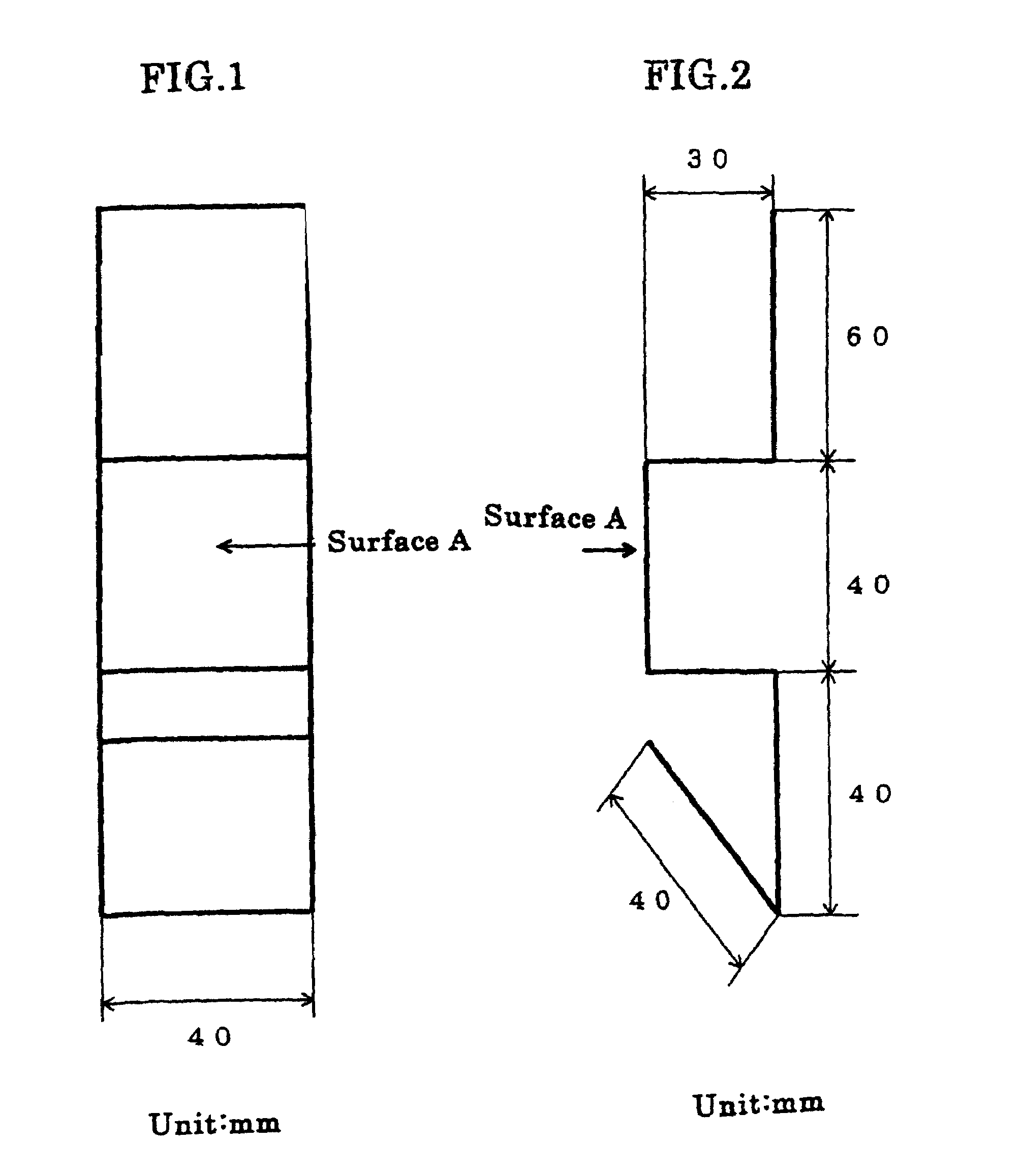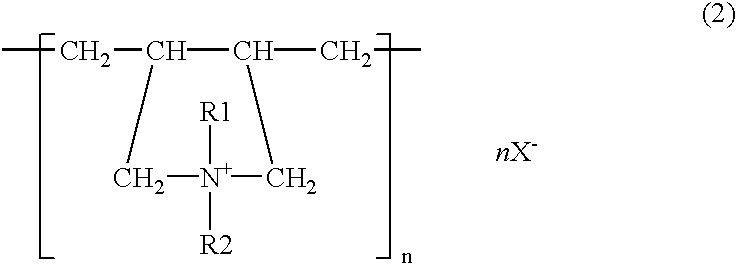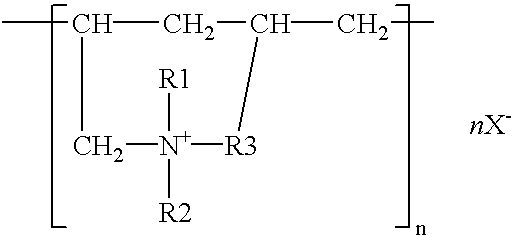Surface treating method and surface treating agent
a surface treatment method and surface treatment technology, applied in the direction of superimposed coating process, other chemical processes, conductors, etc., can solve the problems of inability to provide a basic solution, inability to overcome difficulties such as more or less effective techniques, and inability to provide basic solutions. , to achieve the effect of preventing the escape of metals, enhancing corrosion resistance, and strengthening plating adhesion
- Summary
- Abstract
- Description
- Claims
- Application Information
AI Technical Summary
Benefits of technology
Problems solved by technology
Method used
Image
Examples
example 1
[0037]Plating was carried out using sheet iron as the anode, with a solution containing, all per liter, 10 g zinc oxide, 100 g sodium hydroxide, 2 g polymer of the structural formula (1) (R1, R2=methyl, n=120–450, molecular weight=about 30000), 0.8 g ethylenediamine-epichlorohydrin reaction product, 0.05 g ethylvanillin, 30 g No. 3 sodium silicate (made by Nissan Chemical Ind. Co.), 0.01 g cobalt, 0.1 g iron, and 0.05 g thiourea. The sheet iron test specimen was bent back to the original shape as flat as possible, and there was no trace of exfoliation or peeling off from the former folds. The specimen was immersed for 25 seconds in a treating solution which contained 5 g potassium bichromate, 1 g sulfuric acid, and 0.4 g sodium nitrate per liter and then dried at 60° C. Three test specimens plated on the side A to a thickness of about 5 μm were prepared and subjected to a salt water spray test to determine the corrosion resistance on the side A of the specimens. The time periods the...
example 2
[0038]Plating was done using sheet iron as the anode, with a solution containing, all per liter, 40 g zinc oxide, 180 g potassium hydroxide, 2 g polymer of the structural formula (2) (R1, R2=CH3, R3=CH2, n=150–800, molecular weight=about 50000, X=chlorine), 0.1 g pentaethylenehexamine-epichlorohydrin reaction product, 0.06 g vanillin, 15 g colloidal silica (made by Nissan Chemical Ind. Co., “Catalloid 20”), and 0.1 g iron. The sheet iron was immersed for 60 seconds in a treating solution which contained 3 g chromium acetate, 0.5 g sodium sulfate, 0.5 g sodium nitrate, and 2 g phosphoric acid per liter and then immersed for 20 seconds in a treating solution which contained 60 g sodium silicate, 10 g sodium hydroxide, and 0.04 g zinc per liter, and dried. Three test specimens plated on the side A to a thickness of about 5 μm were prepared and they were tested for their corrosion resistance on the side A by salt water spraying. The time periods they took to form white rust as zinc rust...
example 3
[0039]Plating of sheet iron was performed with zinc plate as the anode, using a solution which contained, all per liter, 7.5 g zinc oxide, 70 g sodium hydroxide, 0.4 g reaction made by dimethylaminopropylenediamine and epichlorohydrin, 0.3 g imidazole-epichlorohydrin reaction product, 0.03 g benzylpyridinium carboxylate, 1.5 g polymer of the structural formula (3) (R1, R2, R3, R4=methyl, Y=O, n=150–200, molecular weight=about 28000, X=chlorine), 0.05 g anisaldehyde, 40 g No. 3 sodium silicate, 0.015 g iron, and 0.01 g cobalt. The sheet iron test specimen was bent back to the original shape as flat as possible, and there was no trace of exfoliation or peeling off from the former folds. The specimen was immersed for 30 seconds in a treating solution which contained 3 g potassium bichromate, 2 g chromic acid, 1 g nitric acid, 1 g sulfuric acid, and 50 g acetic acid per liter and then dried at 60° C. Three test specimens plated on the side A to a thickness of about 5 μm were prepared an...
PUM
| Property | Measurement | Unit |
|---|---|---|
| size | aaaaa | aaaaa |
| thickness | aaaaa | aaaaa |
| thickness | aaaaa | aaaaa |
Abstract
Description
Claims
Application Information
 Login to View More
Login to View More - R&D
- Intellectual Property
- Life Sciences
- Materials
- Tech Scout
- Unparalleled Data Quality
- Higher Quality Content
- 60% Fewer Hallucinations
Browse by: Latest US Patents, China's latest patents, Technical Efficacy Thesaurus, Application Domain, Technology Topic, Popular Technical Reports.
© 2025 PatSnap. All rights reserved.Legal|Privacy policy|Modern Slavery Act Transparency Statement|Sitemap|About US| Contact US: help@patsnap.com



